Over the years the European Southern Observatory (ESO) has provided a state-of-the-art research facility for astronomers around the globe. Many ground breaking discoveries have been made and many breathtaking images have been recorded. The following fifteen must-see images are some of the best nebula images ever captured.
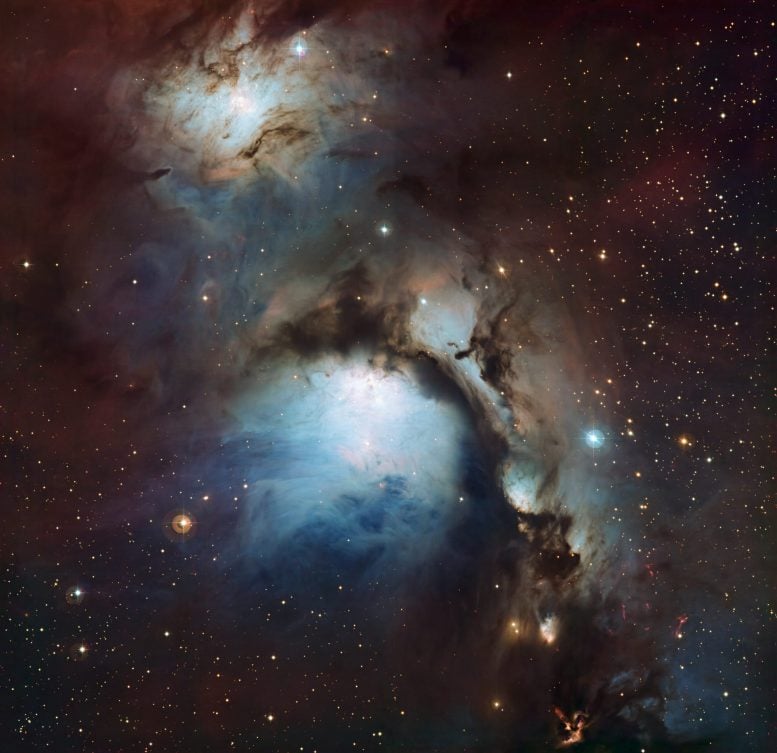
This new image of the reflection nebula Messier 78 was captured using the Wide Field Imager camera on the MPG/ESO 2.2-meter telescope at the La Silla Observatory, Chile. This color picture was created from many monochrome exposures taken through blue, yellow/green and red filters, supplemented by exposures through a filter that isolates light from glowing hydrogen gas. The total exposure times were 9, 9, 17.5 and 15.5 minutes per filter, respectively. Credit: ESO/Igor Chekalin
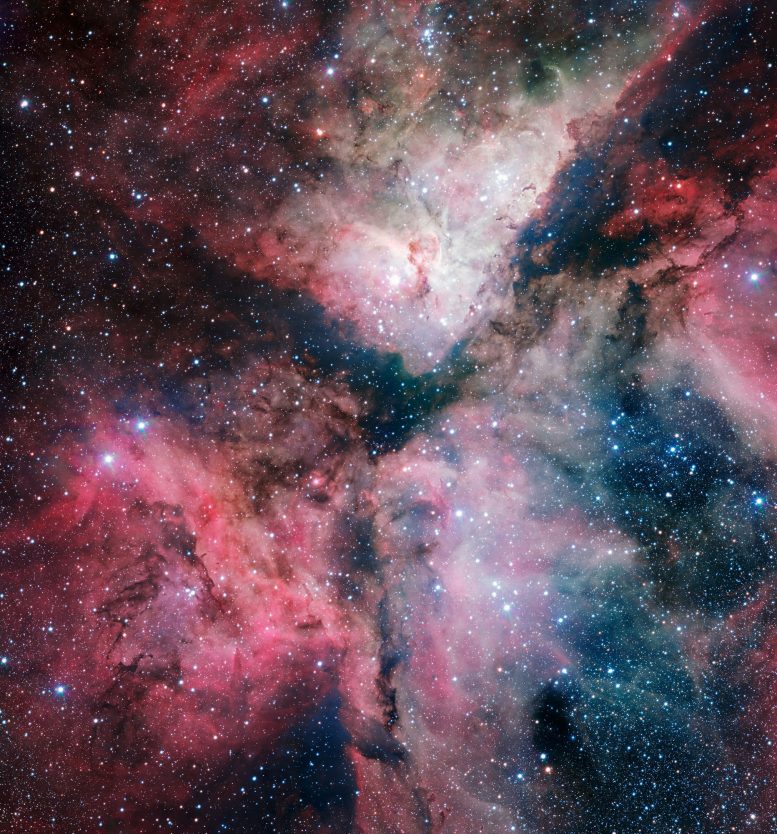
The spectacular star-forming Carina Nebula has been captured in great detail by the VLT Survey Telescope at ESO’s Paranal Observatory. This picture was taken with the help of Sebastián Piñera, President of Chile, during his visit to the observatory on June 5, 2012 and released on the occasion of the new telescope’s inauguration in Naples on December 6, 2012. Credit: ESO. Acknowledgment: VPHAS+ Consortium/Cambridge Astronomical Survey Unit
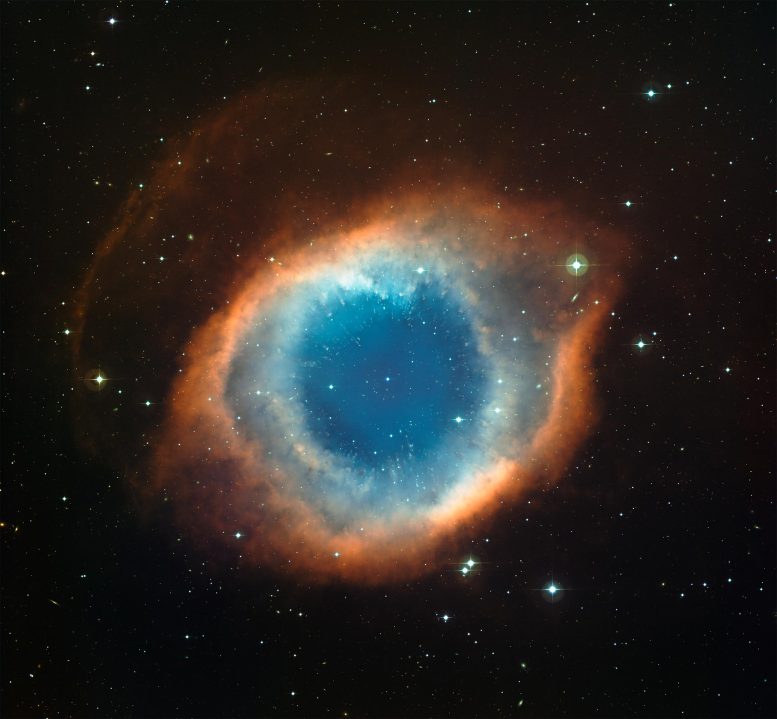
This color-composite image of the Helix Nebula (NGC 7293) was created from images obtained using the Wide Field Imager (WFI), an astronomical camera attached to the 2.2-metre Max-Planck Society/ESO telescope at the La Silla observatory in Chile. The blue-green glow in the centre of the Helix comes from oxygen atoms shining under effects of the intense ultraviolet radiation of the 120 000 degree Celsius central star and the hot gas. Further out from the star and beyond the ring of knots, the red colour from hydrogen and nitrogen is more prominent. A careful look at the central part of this object reveals not only the knots, but also many remote galaxies seen right through the thinly spread glowing gas. This image was created from images through blue, green and red filters and the total exposure times were 12 minutes, 9 minutes and 7 minutes respectively. Credit: ESO
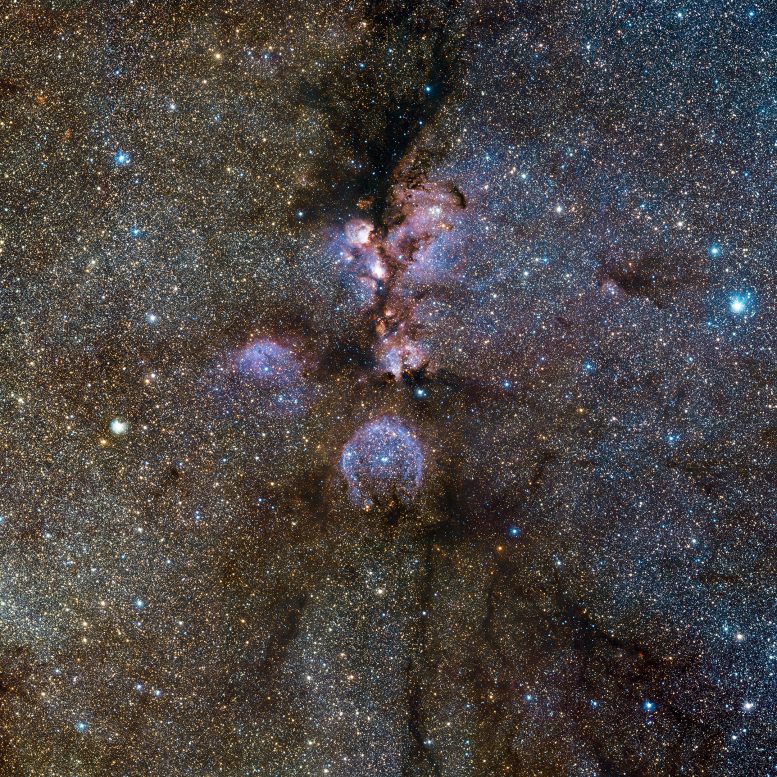
Infrared view of the Cat’s Paw Nebula (NGC 6334) taken by VISTA. NGC 6334 is a vast region of star formation about 5500 light-years from Earth in the constellation of Scorpius. The whole gas cloud is about 50 light-years across. NGC 6334 is one of the most active nurseries of young massive stars in our galaxy, some nearly ten times the mass of our Sun and most born in the last few million years. The images were taken through Y, J and Ks filters (shown as blue, green and red respectively) and the exposure time was five minutes per filter. The field of view is about one degree across. Credit: ESO/J. Emerson/VISTA, Acknowledgment: Cambridge Astronomical Survey Unit
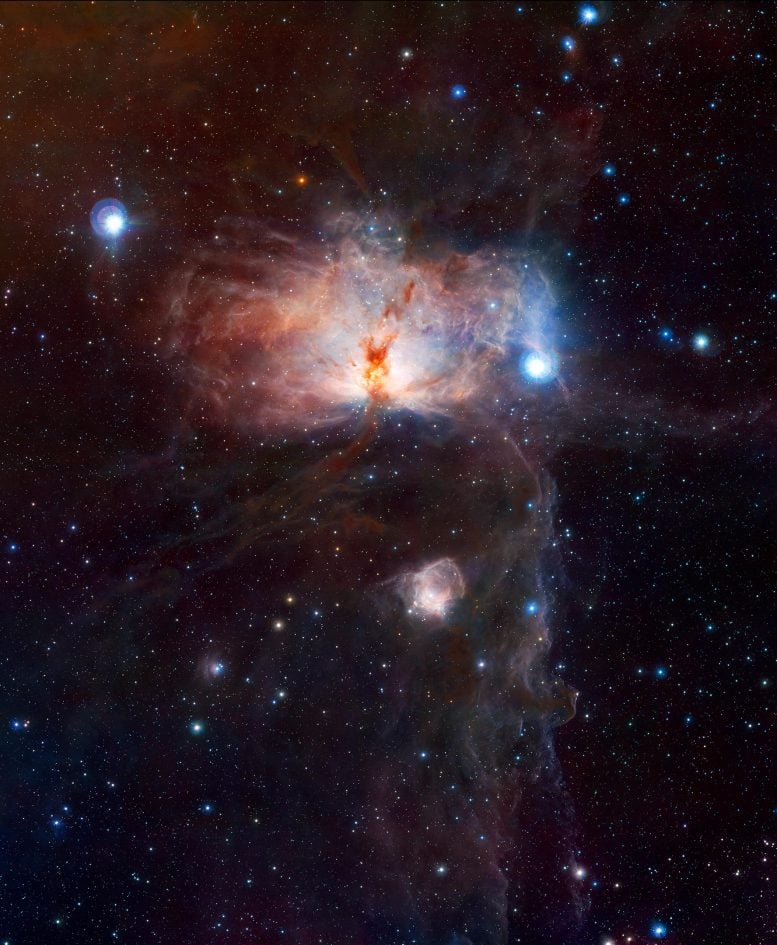
This VISTA image shows the spectacular star-forming region known as the Flame Nebula, or NGC 2024, in the constellation of Orion (the Hunter) and its surroundings. In views of this evocative object in visible light the core of the nebula is completely hidden behind obscuring dust, but in this VISTA view, taken in infrared light, the cluster of very young stars at the object’s heart is revealed. The wide-field VISTA view also includes the glow of the reflection nebula NGC 2023, just below centre, and the ghostly outline of the Horsehead Nebula (Barnard 33) towards the lower right. The bright bluish star towards the right is one of the three bright stars forming the Belt of Orion. The image was created from VISTA images taken through J, H and Ks filters in the near-infrared part of the spectrum. The image shows the full area of the VISTA field and is one degree by 1.5 degrees in extent. The total exposure time was 14 minutes. Credit: ESO/J. Emerson/VISTA. Acknowledgment: Cambridge Astronomical Survey Unit
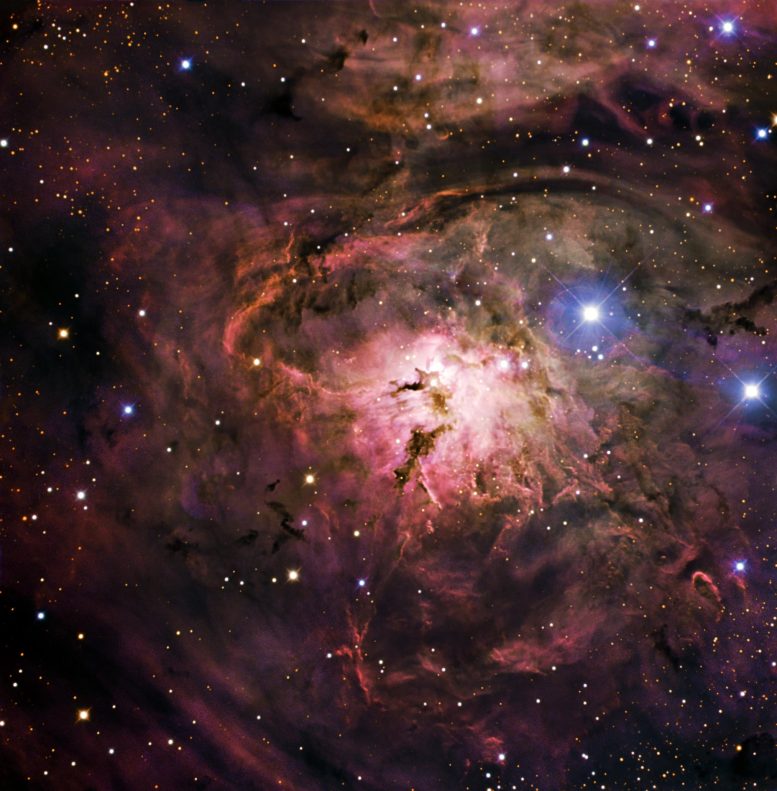
Gas and dust condense, beginning the process of creating new stars in this image of Messier 8, also known as the Lagoon Nebula. Located four to five thousand light-years away, in the constellation of Sagittarius (the Archer), the nebula is a giant interstellar cloud, one hundred light-years across. It boasts many large, hot stars, whose ultraviolet radiation sculpts the gas and dust into unusual shapes. Two of these giant stars illuminate the brightest part of the nebula, known as the Hourglass Nebula, a spiralling, funnel-like shape near its centre. Messier 8 is one of the few star-forming nebulae visible to the unaided eye, and was discovered as long ago as 1747, although the full range of colours wasn’t visible until the advent of more powerful telescopes. The Lagoon Nebula derives its name from the wide lagoon-shaped dark lane located in the middle of the nebula that divides it into two glowing sections. This image combines observations performed through three different filters (B, V, R) with the 1.5-metre Danish telescope at the ESO La Silla Observatory in Chile. Credit: ESO/IDA/Danish 1.5 m/ R. Gendler, U.G. Jørgensen, K. Harpsøe
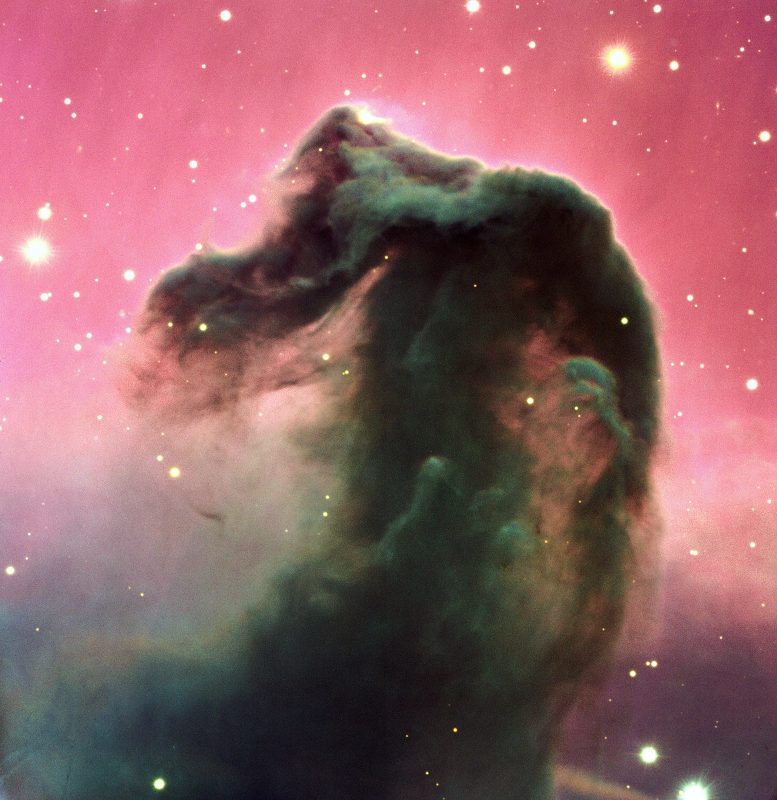
A reproduction of a composite color image of the Horsehead Nebula and its immediate surroundings. It is based on three exposures in the visual part of the spectrum with the FORS2 multi-mode instrument at the 8.2-m KUEYEN telescope, part of ESO’s Very Large Telescope, at Paranal. It was produced from three images, obtained on February 1, 2000, with the FORS2 multi-mode instrument at the 8.2-m KUEYEN Unit Telescope and extracted from the VLT Science Archive Facility . The frames were obtained in the B-band (600 sec exposure; wavelength 429 nm; FWHM 88 nm; here rendered as blue), V-band (300 sec; 554 nm; 112 nm; green) and R-band (120 sec; 655 nm; 165 nm; red). The original pixel size is 0.2 arcsec. The photo shows the full field recorded in all three colors, approximately 6.5 x 6.7 arcmin 2 . The seeing was about 0.75 arcsec. Credit: ESO
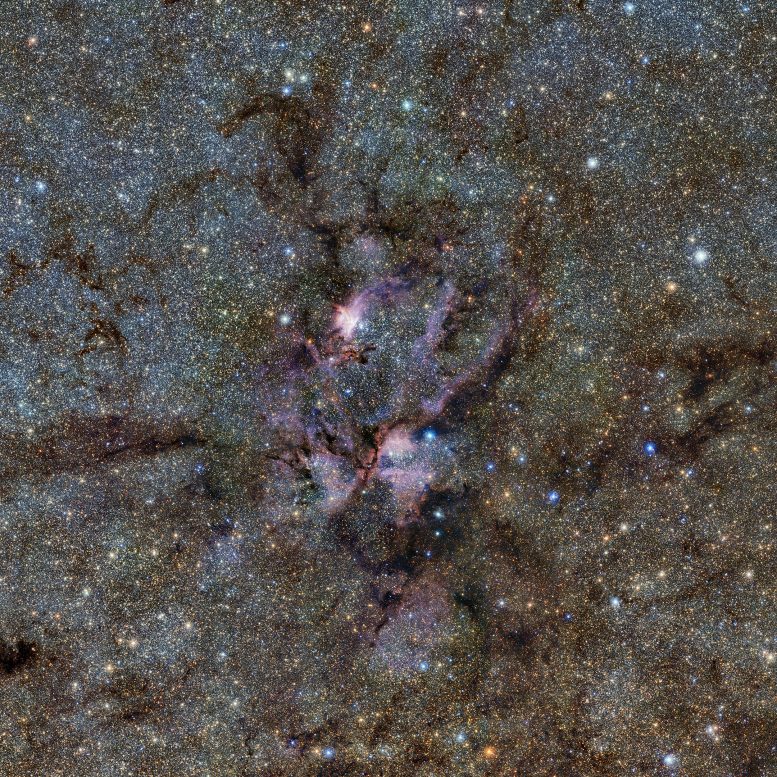
This image from ESO’s VISTA telescope captures a celestial landscape of vast, glowing clouds of gas and tendrils of dust surrounding hot young stars. This infrared view reveals the stellar nursery known as NGC 6357 in a new light. It was taken as part of the VISTA Variables in the Vía Láctea (VVV) survey, which is currently scanning the Milky Way in a bid to map our galaxy’s structure and explain how it formed. Credit: ESO/VVV Survey/D. Minniti. Acknowledgment: Ignacio Toledo
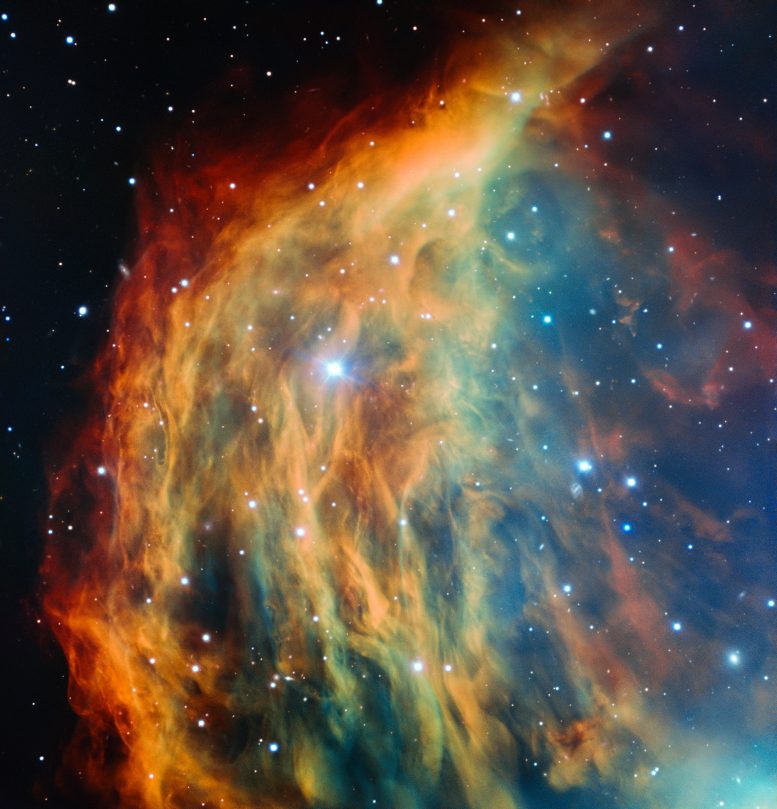
ESO’s Very Large Telescope in Chile has captured the most detailed image ever taken of the Medusa Nebula (also known Abell 21 and Sharpless 2-274). As the star at the heart of this nebula made its final transition into retirement, it shed its outer layers into space, forming this colourful cloud. The image foreshadows the final fate of the Sun, which will eventually also become an object of this kind. Credit: ESO
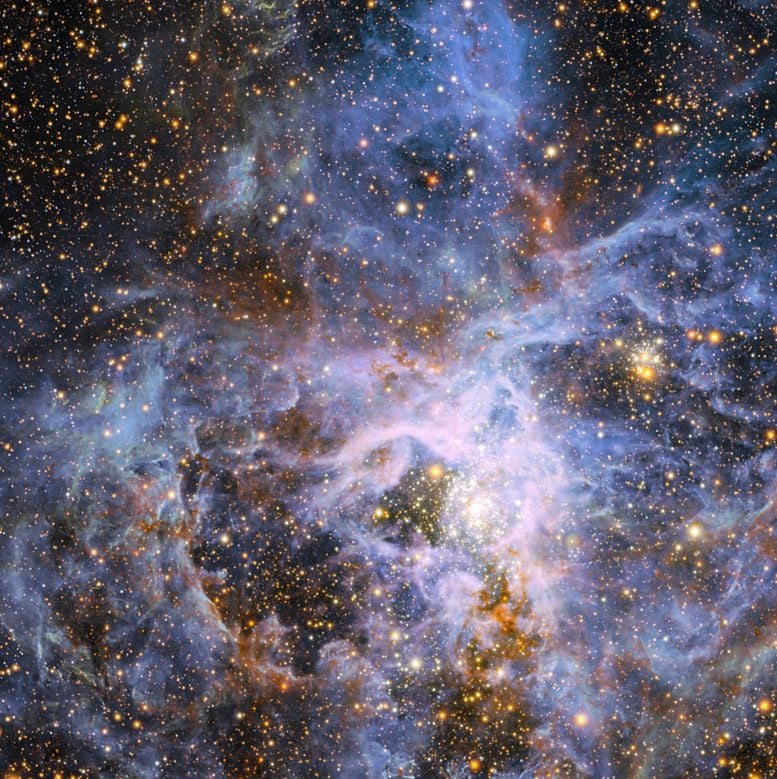
This view shows part of the very active star-forming region around the Tarantula Nebula in the Large Magellanic Cloud, a small neighbor of the Milky Way. At the exact center lies the brilliant but isolated star VFTS 682 and to its lower right the very rich star cluster R 136. The origins of VFTS 682 are unclear — was it ejected from R 136 or did it form on its own? The star appears yellow-red in this view, which includes both visible-light and infrared images from the Wide Field Imager at the 2.2-metre MPG/ESO telescope at La Silla and the 4.1-metre infrared VISTA telescope at Paranal, because of the effects of dust. Credit: ESO/M.-R. Cioni/VISTA Magellanic Cloud survey. Acknowledgment: Cambridge Astronomical Survey Unit
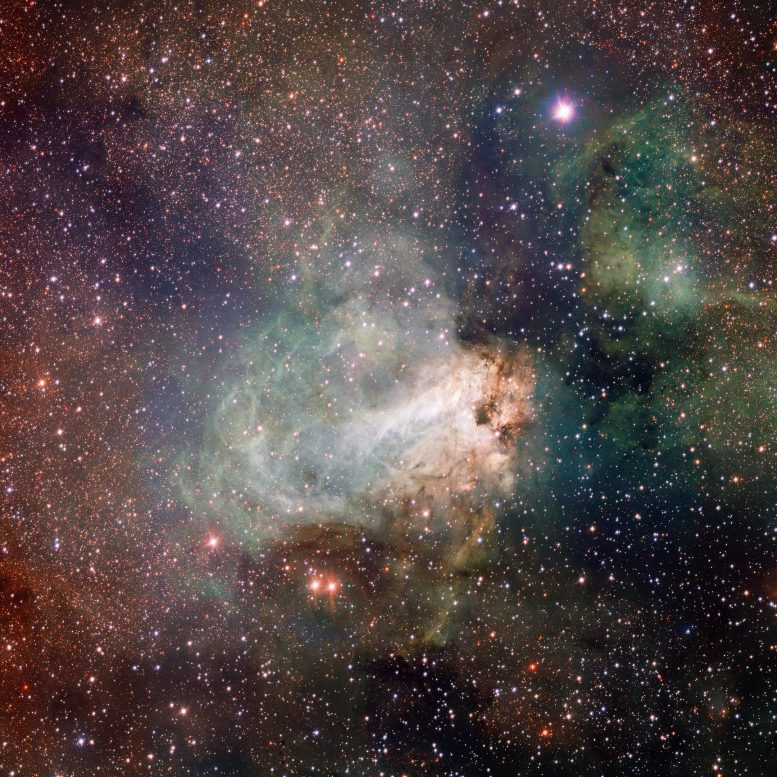
The first released VST image shows the spectacular star-forming region Messier 17, also known as the Omega Nebula or the Swan Nebula, as it has never been seen before. This vast region of gas, dust and hot young stars lies in the heart of the Milky Way in the constellation of Sagittarius (The Archer). The VST field of view is so large that the entire nebula, including its fainter outer parts, is captured — and retains its superb sharpness across the entire image. The data were processed using the Astro-WISE software system developed by E.A. Valentijn and collaborators at Groningen and elsewhere. Credit:
ESO/INAF-VST/OmegaCAM. Acknowledgment: OmegaCen/Astro-WISE/Kapteyn Institute
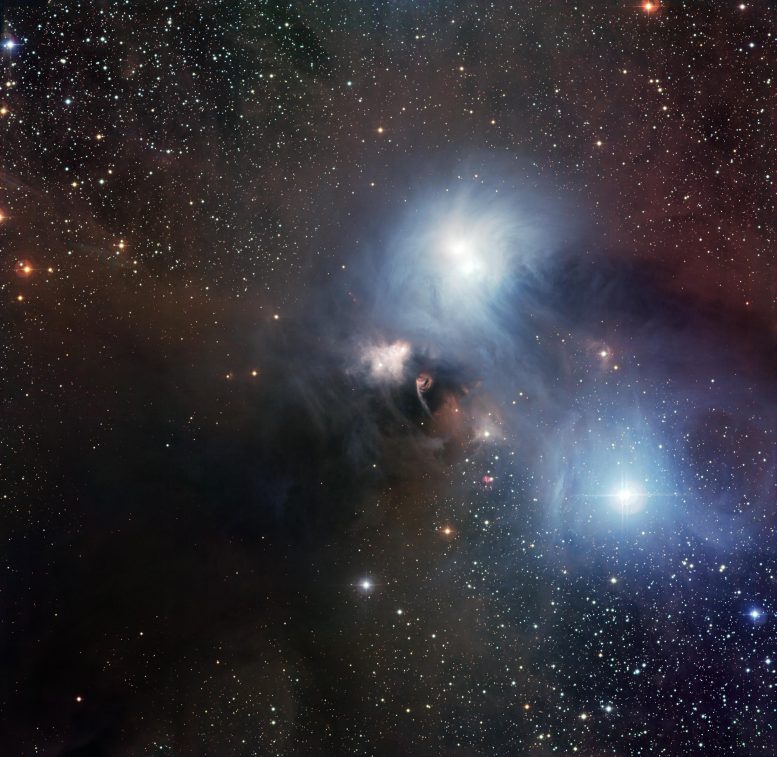
The nearby star-forming region around the star R Coronae Australis imaged by the Wide Field Imager (WFI) on the MPG/ESO 2.2-metre telescope at ESO’s La Silla Observatory in Chile. This picture, which covers a field of 33.7 x 31.9 arcminutes (about the diameter of the full Moon), is a combination of twelve CCD frames, 67 megapixels each, taken through B, V and R filters, with four exposures of five minutes each. Credit: ESO
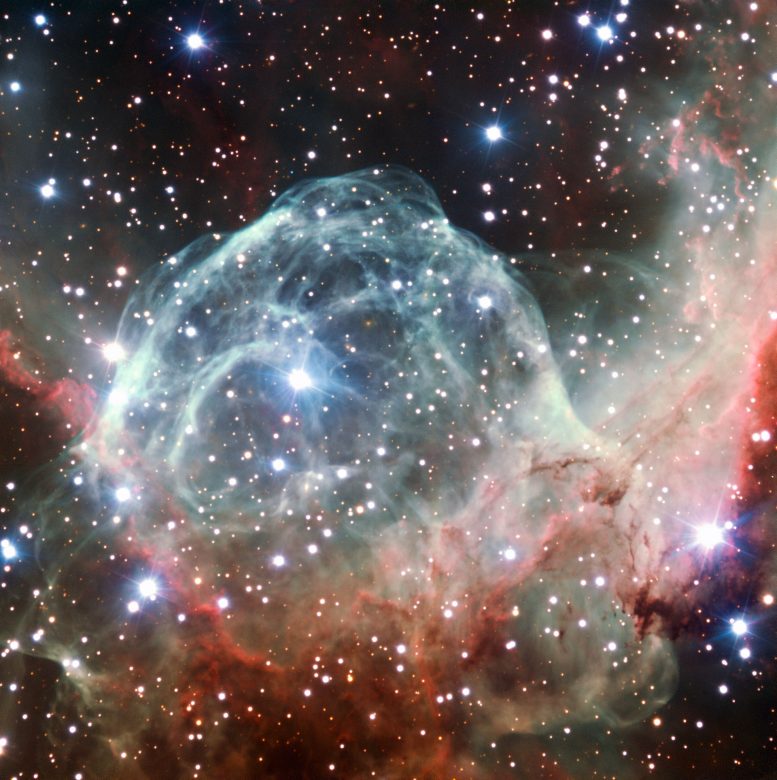
This VLT image of the Thor’s Helmet Nebula was taken on the occasion of ESO’s 50th Anniversary, 5 October 2012, with the help of Brigitte Bailleul — winner of the Tweet Your Way to the VLT! competition. The observations were broadcast live over the internet from the Paranal Observatory in Chile. This object, also known as NGC 2359, lies in the constellation of Canis Major (The Great Dog). The helmet-shaped nebula is around 15 000 light-years away from Earth and is over 30 light-years across. The helmet is a cosmic bubble, blown as the wind from the bright, massive star near the bubble’s center sweeps through the surrounding molecular cloud. Credit: ESO/B. Bailleul
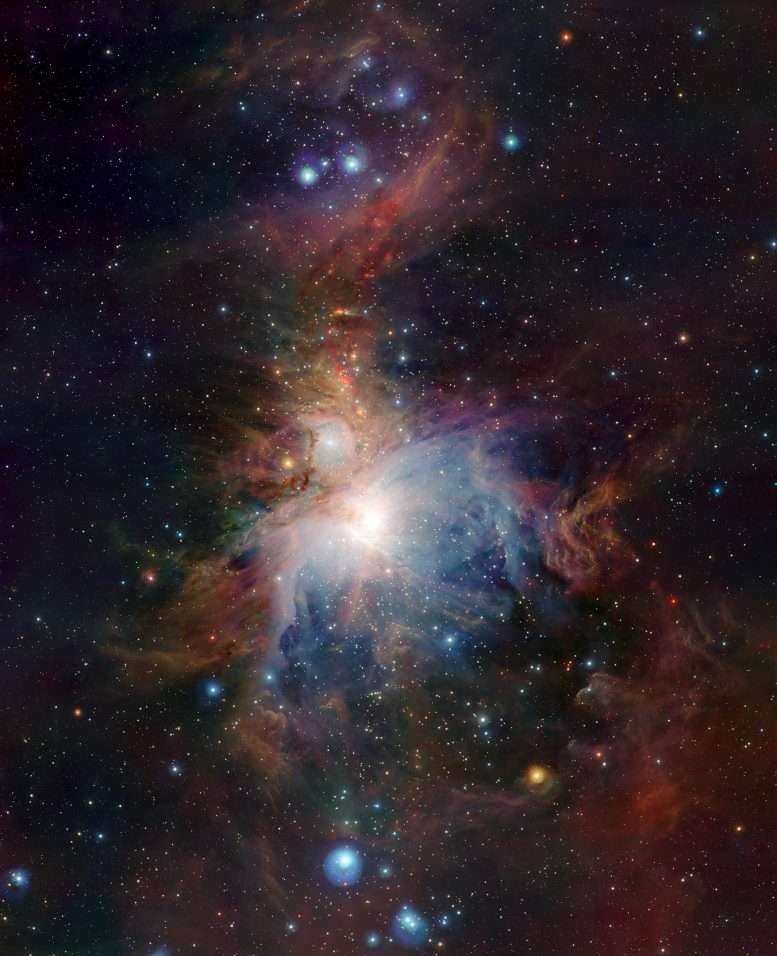
This wide-field view of the Orion Nebula (Messier 42), lying about 1350 light-years from Earth, was taken with the VISTA infrared survey telescope at ESO’s Paranal Observatory in Chile. The new telescope’s huge field of view allows the whole nebula and its surroundings to be imaged in a single picture and its infrared vision also means that it can peer deep into the normally hidden dusty regions and reveal the curious antics of the very active young stars buried there. This image was created from images taken through Z, J and Ks filters in the near-infrared part of the spectrum. The exposure times were ten minutes per filter. The image covers a region of sky about one degree by 1.5 degrees. Credit: ESO/J. Emerson/VISTA,
Acknowledgment: Cambridge Astronomical Survey Unit
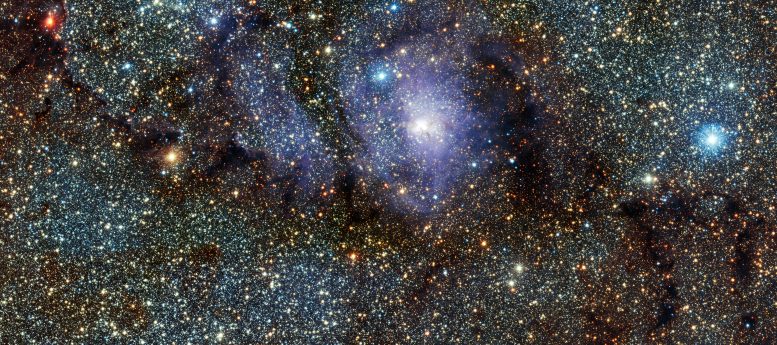
This new infrared view of the star formation region Messier 8, often called the Lagoon Nebula, was captured by the VISTA telescope at ESO’s Paranal Observatory in Chile. This color picture was created from images taken through J, H and Ks near-infrared filters, and which were acquired as part of a huge survey of the central parts of the Milky Way. The field of view is about 34 by 15 arcminutes. Credit: ESO/VVV, Acknowledgment: Cambridge Astronomical Survey Unit

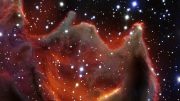
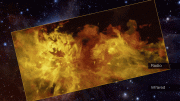
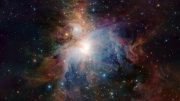
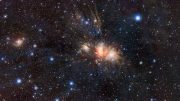
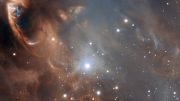
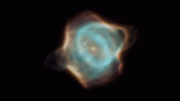
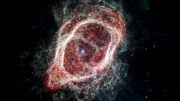
Be the first to comment on "15 Must-See Nebula Images from the European Southern Observatory"